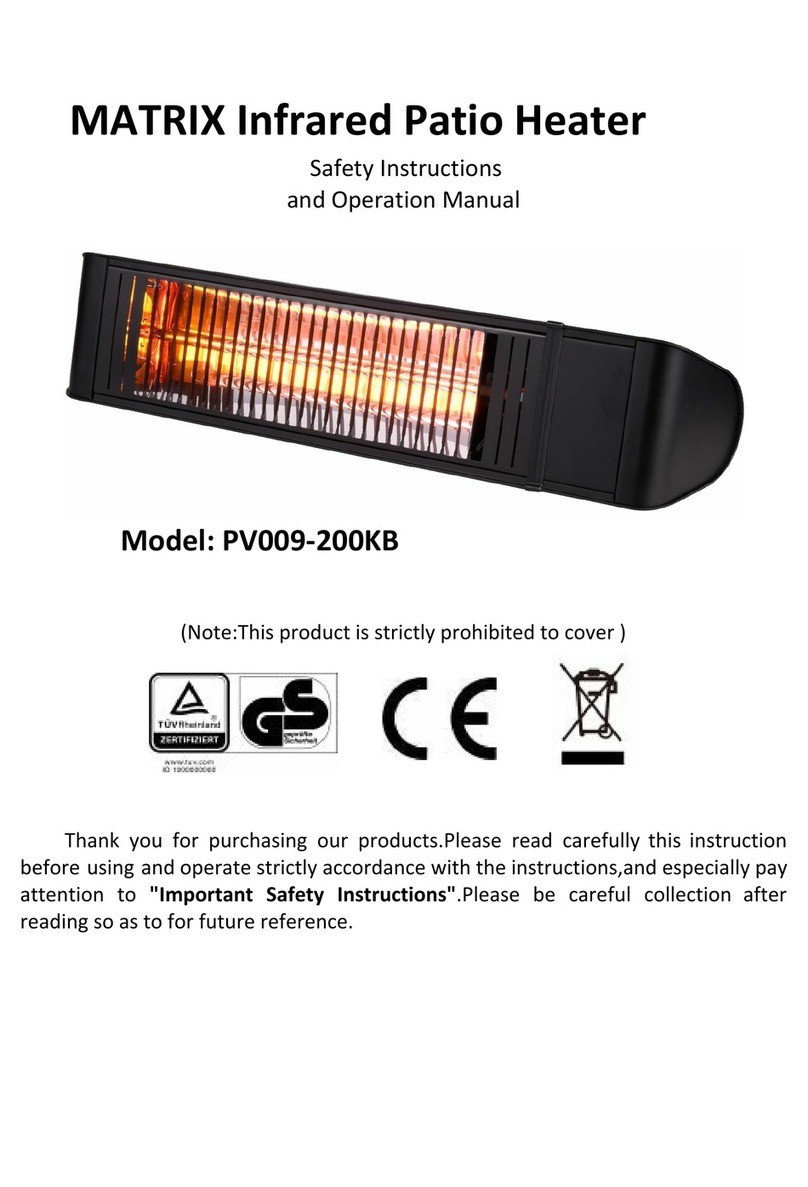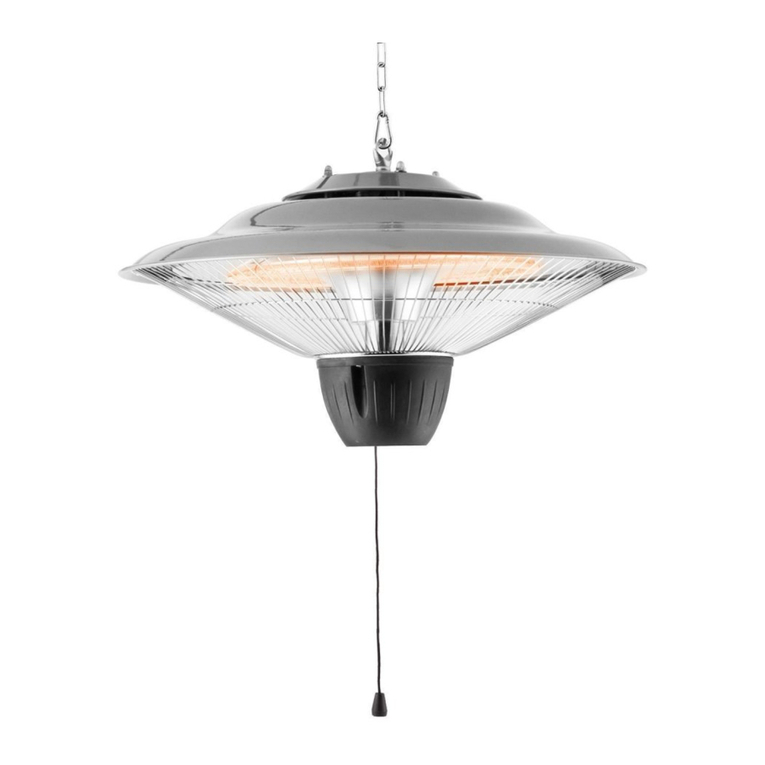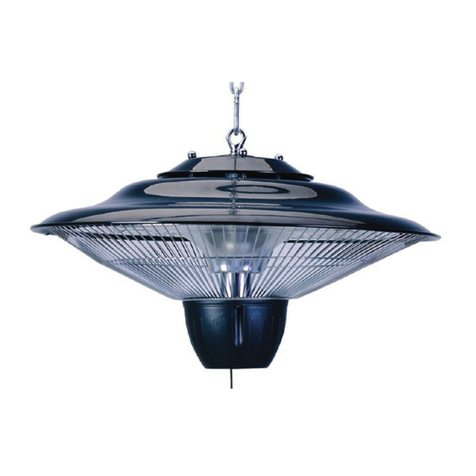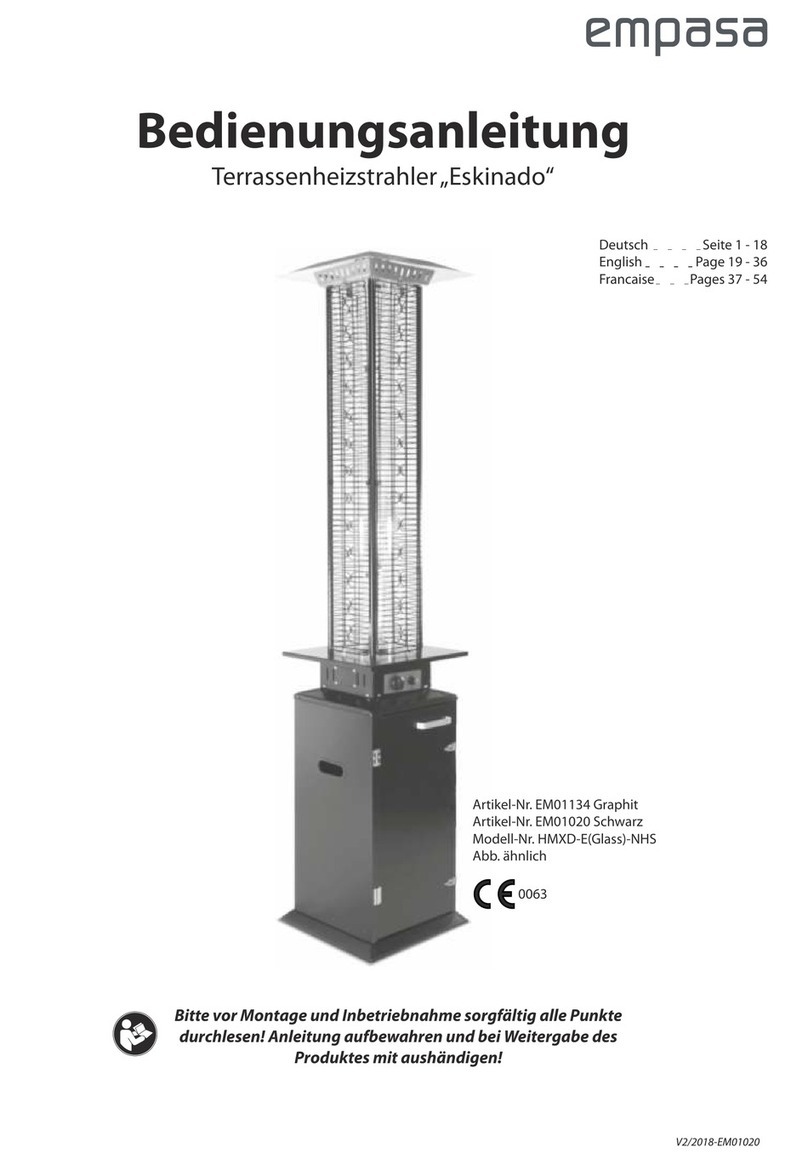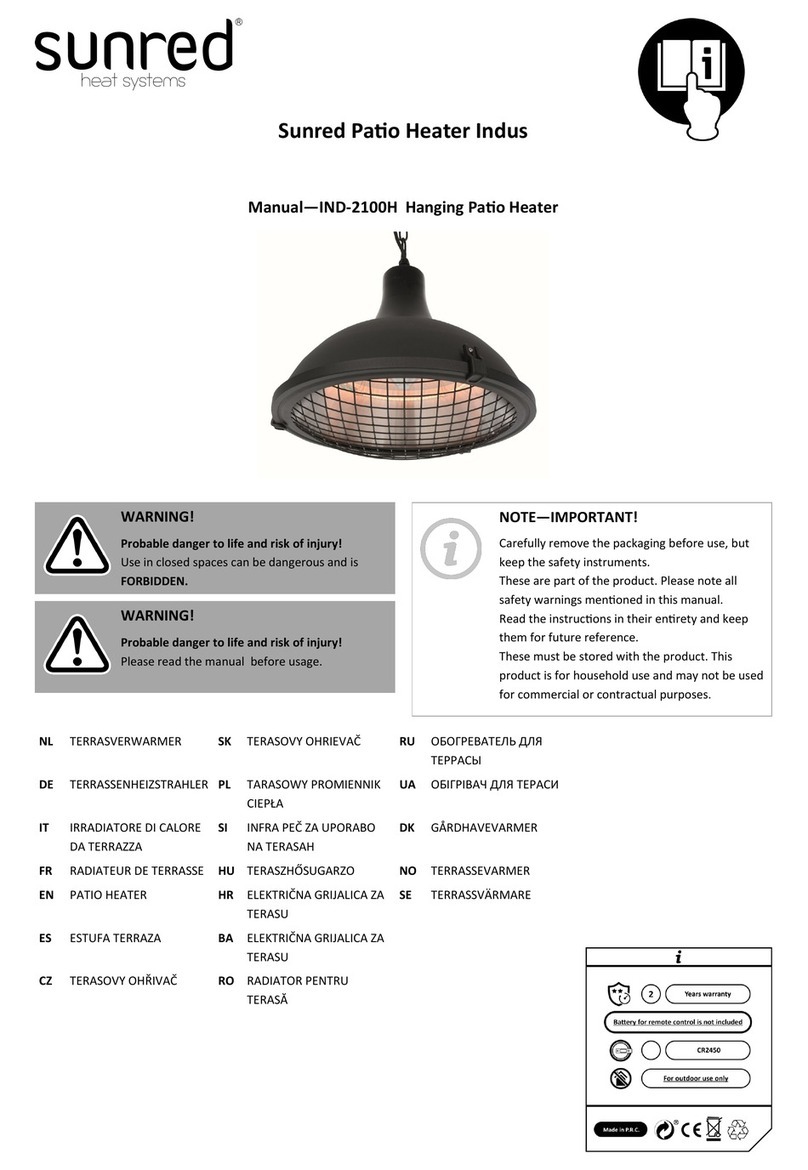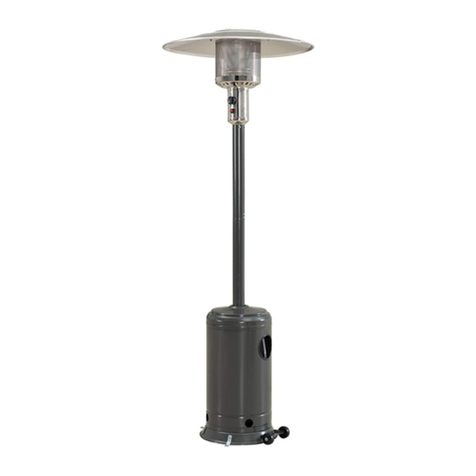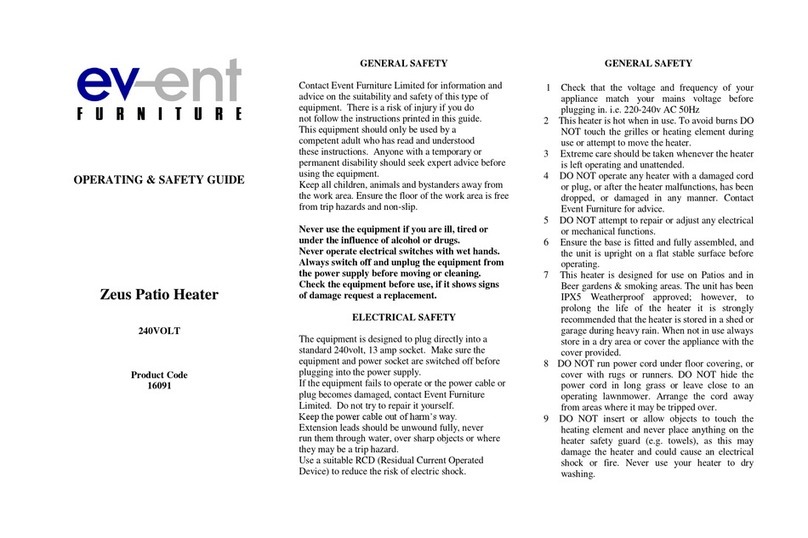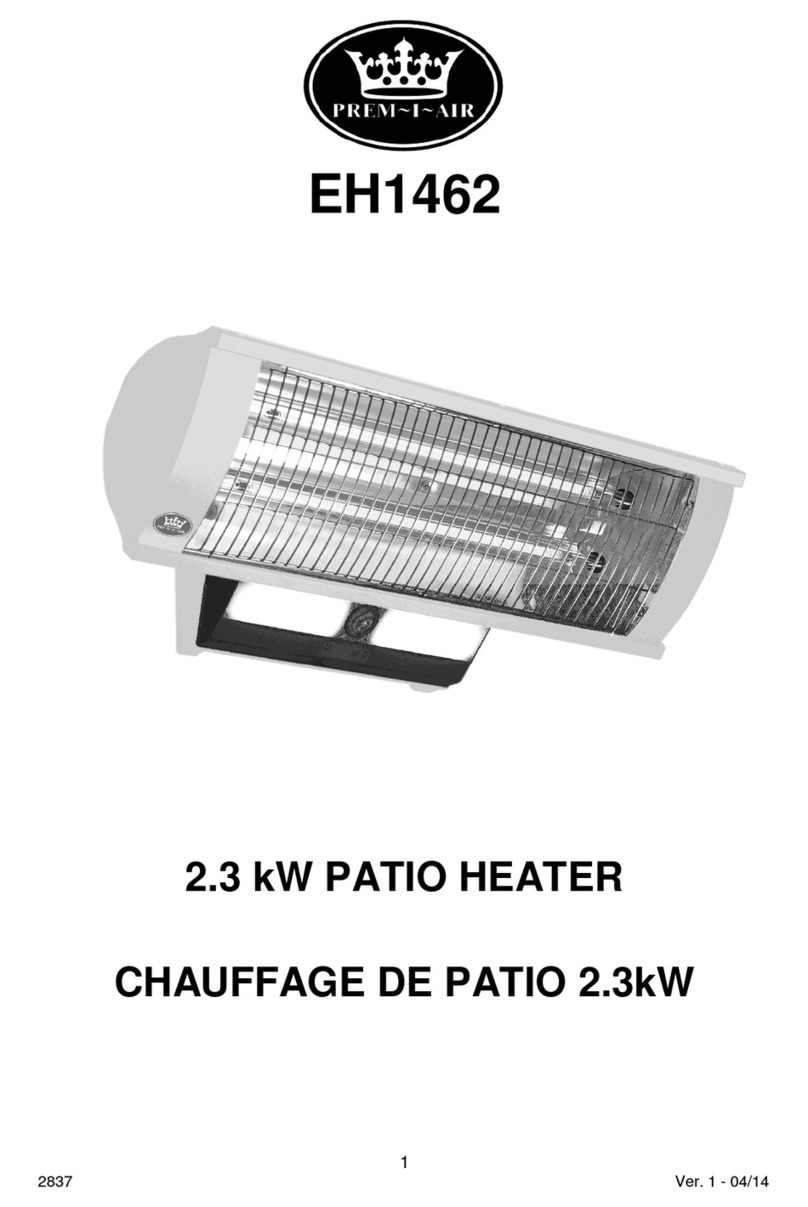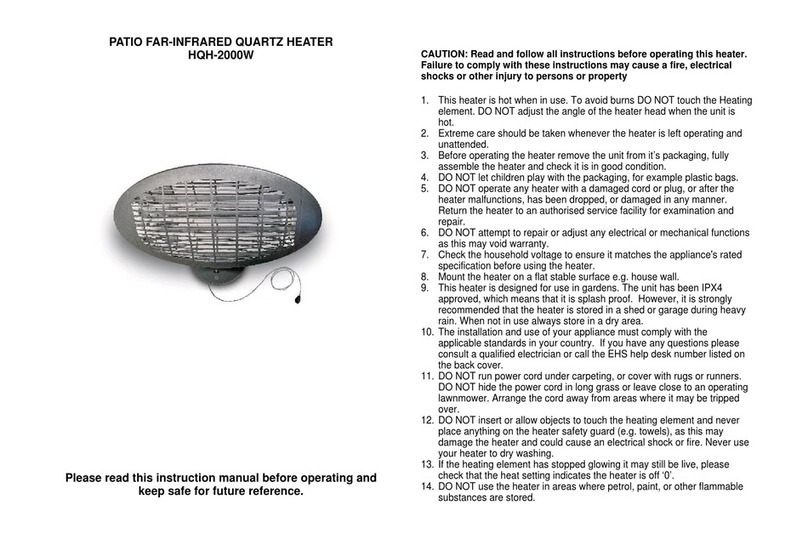2
IMPORTANT NOTES
IMPORTANT
THIS APPLIANCE SHALL NOT BE
INSTALLED OR USED INDOORS.
DO NOT PLACE ARTICLES ON OR
AGAINST THIS APPLIANCE.
DO NOT USE OR STORE FLAMMABLE
MATERIALS NEAR THIS APPLIANCE
DO NOT SPRAY AEROSOLS IN THE
VICINITY OF THIS APPLIANCE WHILE IT IS
IN OPERATION
CHILDREN AND ADULTS SHOULD BE
ALERTED TO THE HAZARDS OF HIGH
SURFACE TEMPERATURES
This appliance is not intended for use by
young children or the infirm without
supervision.
Any materials or objects that are stored
near this appliance when it is in operation
may be subjected to radiant heat and could
sustain damage.
The gas supply hose is to be inspected for
damage before each use. Care must also
be taken not to damage the gas hose when
assembling the appliance and when fitting
or removing the gas bottle and bottle cover.
In the event of damage being evident
(cracks, tears, abrasion etc.), the hose must
be replaced immediately by an authorised
repairer.
Care must be taken to ensure that the
minimum clearances shown on page 3 are
maintained.
This appliance should be serviced by a
qualified person on an annual basis.
All external covers are made from stainless
steel that will not rust but should be cleaned
regularly, especially if in a coastal
environment.
Stainless steel should be cleaned using
warm water and a mild detergent.
CAUTION: Never use products containing
abrasive liquid cleaners etc.
This appliance should be stored out of the
weather if not intended for use for long
periods of time.
To avoid damage to this appliance, the
battery should be removed when not being
used for long periods of time.


